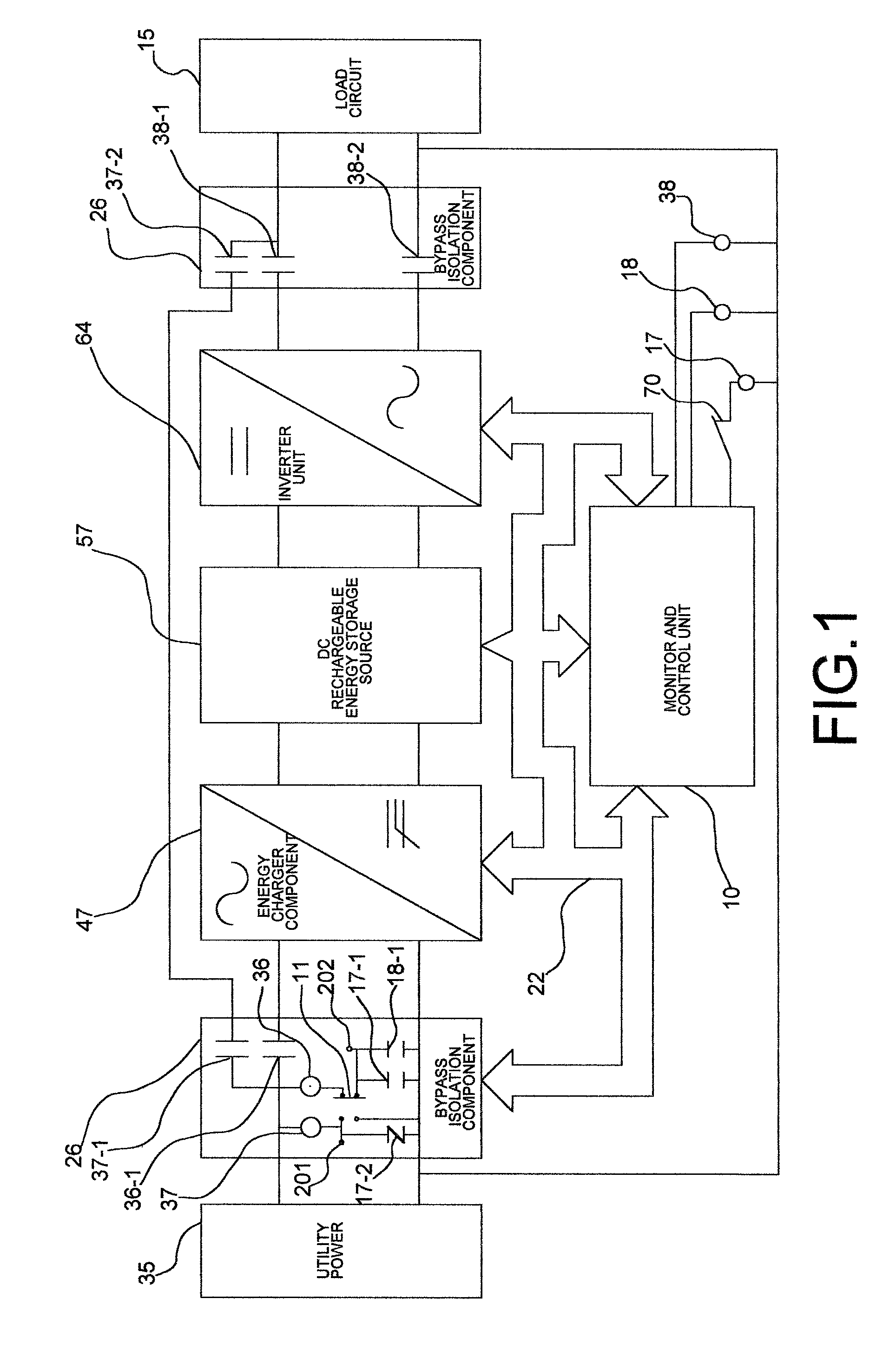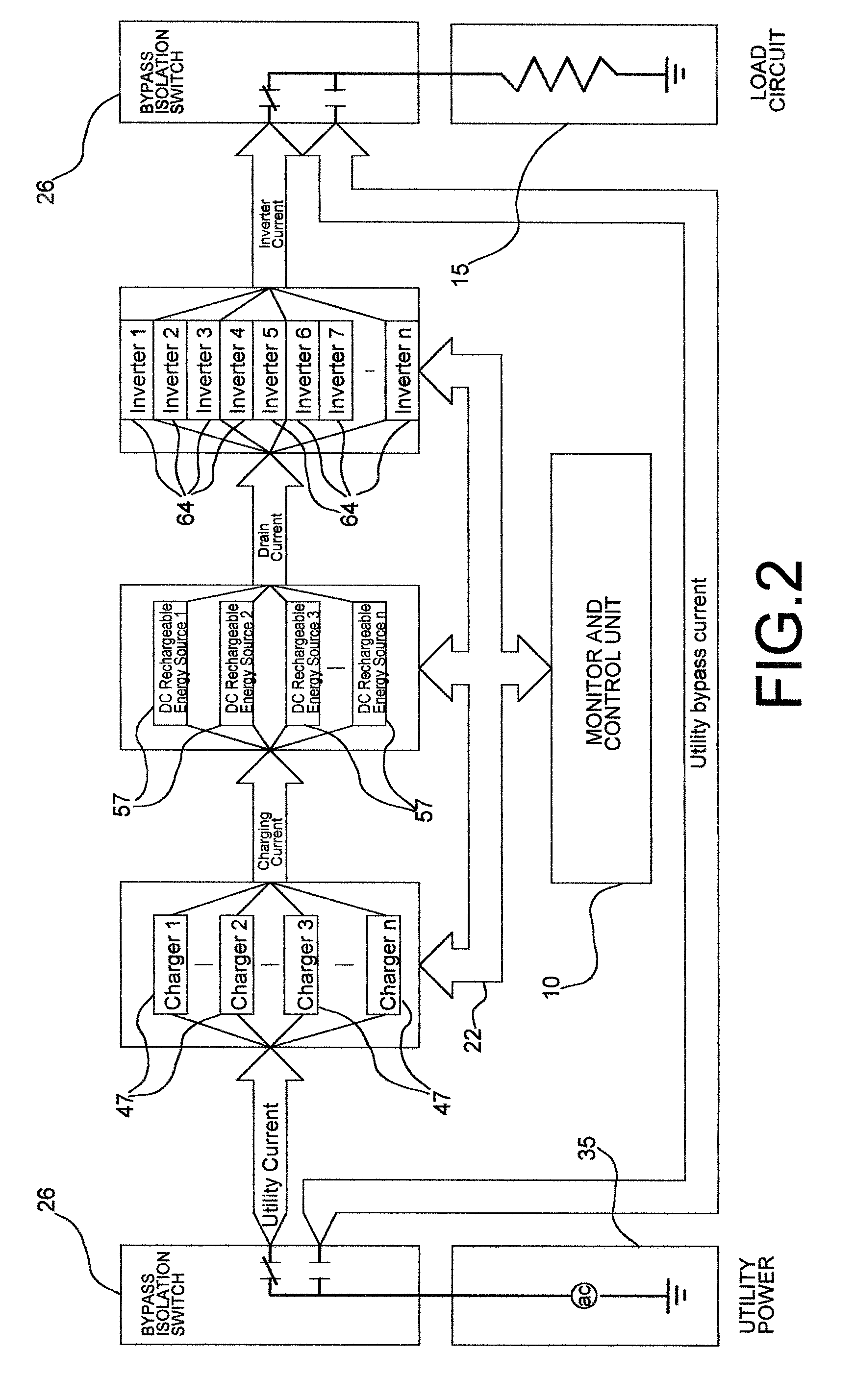Electric power conservation system for storing electric power for use during off-peak hours
a technology of electric power storage and electricity, applied in the direction of relays, emergency power supply arrangements, pulse techniques, etc., can solve the problems of prohibitively expensive systems, unattractive aesthetics, and large installation costs, and achieve the effect of reducing the amount of utility power usage and reducing load
- Summary
- Abstract
- Description
- Claims
- Application Information
AI Technical Summary
Benefits of technology
Problems solved by technology
Method used
Image
Examples
Embodiment Construction
[0038]FIG. 1 schematically illustrates an electric power conservation system in accordance with the principles of the present invention, showing a utility power source 35 supplying 120 VAC electrical power to a load circuit 15 through separate current paths, a bypass current path, and an energy conservation current path. The electric power conservation system can automatically and manually switch between the bypass current path and the energy conservation current path. When the energy conservation current path is active, the demand of the load circuit 15 causes currents of different magnitudes to flow in a energy charger component 47, a DC rechargeable energy source 57, and an inverter unit 64 that are connected in series. As will be seen in the following paragraphs, the electric power conservation system is designed to minimize the amount of power supplied by the utility power source 35 and maximize the power supplied by the DC rechargeable energy source 57 that is included in the ...
PUM
 Login to View More
Login to View More Abstract
Description
Claims
Application Information
 Login to View More
Login to View More - R&D
- Intellectual Property
- Life Sciences
- Materials
- Tech Scout
- Unparalleled Data Quality
- Higher Quality Content
- 60% Fewer Hallucinations
Browse by: Latest US Patents, China's latest patents, Technical Efficacy Thesaurus, Application Domain, Technology Topic, Popular Technical Reports.
© 2025 PatSnap. All rights reserved.Legal|Privacy policy|Modern Slavery Act Transparency Statement|Sitemap|About US| Contact US: help@patsnap.com



